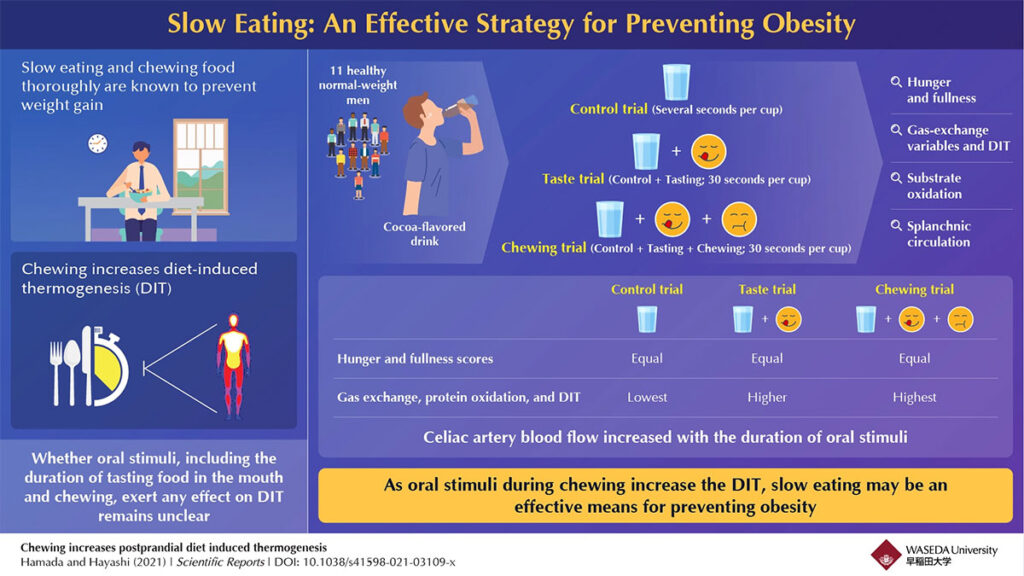Preventing Weight Gain Through Extended Chewing: The Benefits of Chewing Food Longer
Studies have established a causal link between chewing and diet-induced thermogenesis. Eating slowly and chewing thoroughly have long been recognized as healthy practices to combat weight gain and obesity; they were first popularized more than a century ago and since tested in numerous studies. Chewing has also been found to increase expenditure related to food metabolism as well as intestinal motility resulting in greater heat generation by the body after consumption of food – known as diet-induced thermogenesis.
Longevity in chewing food remains unclear as an explanation for diet-induced thermogenesis in the body, though. Diet-induced thermogenesis, the thermic effect of eating, increases energy expenditure above that required to prevent weight gain by basal fasting level. Researchers had discovered earlier that eating slowly and chewing thoroughly increased not only diet-induced thermogenesis but also improved circulation of blood in the abdominal splanchnic region.
While these studies linked chewing-induced diet-induced thermogenesis with improved digestion and activity related to absorption in the abdomen, several crucial factors needed further exploration. Researchers wanted to know whether food boluses entering the digestive tract due to slow eating contributed to an increase in diet-induced thermogenesis; and whether oral stimulation from prolonged chewing of food contributed to this phenomenon. If they wanted chewing slowly as an effective weight management strategy they must further examine these factors.
A new study was designed using liquid food to alleviate the adverse effects of food boluses. It consisted of three phases conducted over multiple days. For the control phase, 20 mL of test liquid food was swallowed normally every half minute by participants as part of the control condition. Phase two involved keeping the same test food in participants’ mouths for half a minute without chewing, to allow prolonged tasting before swallowing. In the third phase, researchers explored both chewing and tasting effects; their 20 mL test food was chewed for half a minute at one chew every second before swallowing it. Fullness/hunger measurements, gas exchange variables, diet-induced thermogenesis, splanchnic circulation measurements were all recorded both prior to and post consumption of their liquid test food.
The results of the study were quite insightful; no differences existed in terms of fullness and hunger scores between trials. Diet-induced thermogenesis or energy production increased with each bite eaten and each increase in chewing duration or taste stimulation. Meaning oral stimuli enhanced diet-induced thermogenesis independent of food bolus influence; tasting food and chewing longer were associated with greater thermogenesis. Protein oxidation and gas exchange were also stimulated with prolonged chewing and taste stimulation, along with an increase in splanchnic celiac artery blood flow; since this artery supplies blood directly to digestive organs, oral stimuli during chewing also increased upper gastrointestinal tract motility.
Study results highlight how thoroughly chewing one’s food can aid in the prevention of obesity and metabolic syndrome by increasing energy expenditure. While the difference may seem minor for one meal alone, its cumulative effect over an entire year becomes significant.

